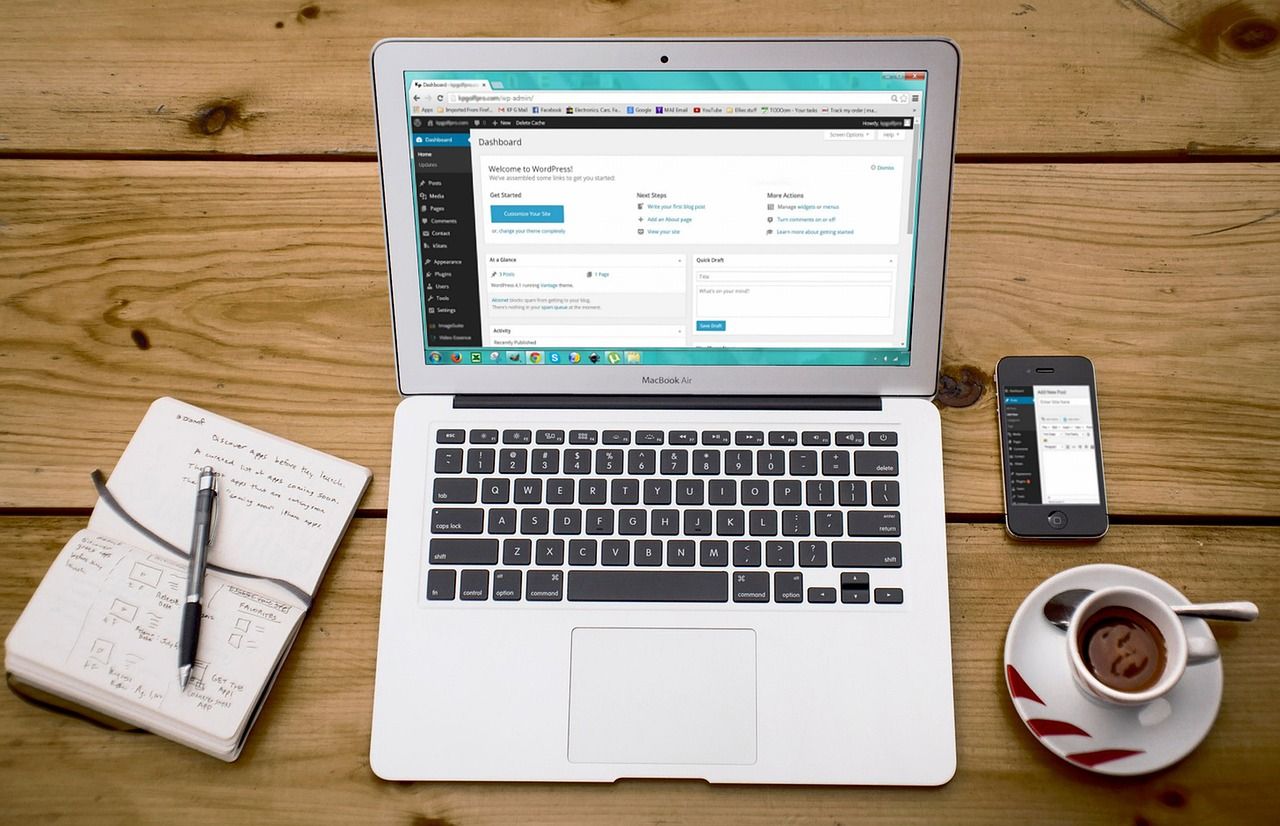Having a strong online presence is crucial for the success of any business, including small businesses in the UK. A website serves as the online face of your business, and it is an essential tool for attracting potential customers, building credibility, and generating leads. However, the misconception that building a website is an expensive endeavor often discourages small business owners from going online. In fact, according to a survey conducted by the Federation of Small Businesses (FSB), 45% of small businesses in the UK do not have a website, and the primary reason cited is the perceived high cost of website development.
To overcome this barrier and take advantage of the digital landscape, small businesses in the UK can build a budget-friendly website for under £500 without compromising on quality or functionality. In this article, we will explore the step-by-step process of creating a cost-effective website that aligns with your business goals and caters to your target audience.
Understanding the Importance of a Budget-Friendly Website
A budget-friendly website allows small businesses to establish an online presence without breaking the bank. It provides an affordable way to showcase products, services, and essential information to potential customers 24/7, helping businesses reach a wider audience and compete in the digital marketplace effectively. In fact, according to research conducted by Statista, 78% of UK consumers research products or services online before making a purchase. Having a website with clear goals and targeting the right audience can significantly impact your business’s success.
Define Your Website Goals and Target Audience
Before diving into website building, it’s essential to define your goals and identify your target audience. Understanding your objectives will help you tailor your website’s design and content to cater to your potential customers effectively. Consider the preferences and needs of your target audience, and align your website’s messaging and design accordingly.
Choosing the Right Website Building Platform
When building a budget-friendly website, choosing the right website building platform is crucial. There are various options available, each with its own set of features and pricing. Popular website builders like Wix, Squarespace, Shopify, and WordPress offer different levels of customization and functionality.
According to BuiltWith, WordPress is the leading content management system globally, with a market share of over 40%. It is widely used by businesses of all sizes in the UK due to its user-friendly interface and extensive customization options. WordPress stands out as an excellent choice for budget-friendly websites due to its extensive library of free and affordable themes and plugins, allowing you to customize your website according to your brand’s requirements.
Selecting a Suitable Website Template or Theme
Once you have chosen your website building platform, it’s time to select a suitable template or theme. The template will serve as the foundation for your website design, and it should align with your brand identity and cater to your target audience’s preferences. Remember, 48% of people cited website design as the number one factor in determining the credibility of a business, according to a study by Blue Corona.
Choosing a professional and visually appealing template can significantly impact the perception of your business. Ensure that the template is mobile-friendly, as 61% of UK internet users access the internet primarily through their mobile phones, as reported by Statista.
Customizing Your Website Design
Customizing your website design is essential to make it visually appealing and user-friendly. Pay attention to the following aspects during customization:
Color Scheme and Branding
Choose a color scheme that aligns with your brand’s identity and creates a positive user experience. According to a study by the University of Loyola, color increases brand recognition by up to 80%. Carefully selecting the right colors can strengthen your brand identity and improve customer recall.
User-Friendly Navigation
Design a clear and intuitive navigation system to ensure visitors can easily find the information they are looking for. A well-organized website reduces bounce rates and encourages users to explore further. Nielsen Norman Group found that 57% of users will abandon a website if they can’t find what they are looking for quickly.
Optimizing for Mobile Devices
With the increasing use of mobile devices, it’s crucial to optimize your website for smaller screens. Responsive design ensures your website looks and functions flawlessly on smartphones and tablets.
UK Industry Data: According to Statista, 61% of UK internet users access the internet primarily through their mobile phones. A mobile-friendly website is essential to cater to this growing segment of users.
Creating Engaging and Relevant Content
Compelling content plays a significant role in engaging visitors and converting them into customers. Pay special attention to the following pages:
Home Page Content
Your home page should provide a clear overview of your business, highlighting your unique selling points and encouraging visitors to explore further. According to HubSpot, 55% of website visitors spend less than 15 seconds on a website. Crafting a compelling and informative home page is essential to capture their attention within this short span.
About Us Page
Use the About Us page to share your brand story, mission, and values. Humanize your business and establish a connection with your audience. According to a study by Edelman, 81% of consumers say that trusting a brand is a deciding factor in their purchasing decisions. An authentic About Us page can build trust and credibility with potential customers.
Services or Products Page
Clearly showcase your products or services, including descriptions, images, and prices. Make it easy for visitors to understand what you offer. A study by Red Website Design found that 64% of consumers are more likely to purchase from a website with clear product images and descriptions. High-quality visuals and concise product information can positively impact purchase decisions.
Contact Page
Ensure your contact page includes all relevant contact information, such as email, phone number, and physical address. This builds trust and makes it easy for customers to get in touch. A survey by BrightLocal revealed that 92% of consumers prefer to contact a business via phone, email, or contact form. Providing multiple contact options enhances accessibility and customer satisfaction.
Implementing Basic SEO Strategies
Search engine optimization (SEO) is crucial for improving your website’s visibility in search engine results. Here are some basic strategies to get you started:
Keyword Research
Identify relevant keywords and phrases related to your business using tools like Google Keyword Planner. Use these keywords strategically throughout your content. According to a study by Advanced Web Ranking, the top result in a Google search receives 31.7% of all clicks. Proper keyword research and optimization can significantly improve your website’s search ranking and organic traffic.
On-Page SEO Optimization
Optimize your page titles, meta descriptions, headings, and content with your chosen keywords. This helps search engines understand your content better.
UK Industry Data: A study by Backlinko revealed that using long-tail keywords in page titles can increase organic traffic by up to 78%. Implementing on-page SEO best practices will increase your website’s visibility and attract relevant organic traffic.
Meta Tags and Descriptions
Write compelling meta tags and descriptions that encourage users to click on your website in search results. A study by Advanced Web Ranking found that organic click-through rates decrease by 45% for positions 2-4 compared to the top spot in search results.
Integrating Social Media and Online Marketing
Social media and online marketing play a vital role in driving traffic to your website and increasing brand awareness. Consider the following strategies:
Leveraging Social Media Platforms
Identify which social media platforms your target audience uses the most and establish a presence there. Share valuable content and engage with your audience regularly. According to a report by We Are Social and Hootsuite, there are over 45 million social media users in the UK. Utilizing these platforms can significantly expand your reach and connect you with potential customers.
Email Marketing Campaigns
Build an email list and send out regular newsletters or promotional offers to keep your audience informed and engaged. Email marketing continues to be an effective way to nurture leads and drive conversions. According to Statista, 81% of small businesses in the UK use email marketing to communicate with their audience.
Local Business Directories
List your business on local directories like Google My Business, Yelp, and Bing Places. This improves your local visibility and increases the chances of attracting nearby customers. A study by BrightLocal found that 93% of consumers used the internet to find a local business in the last year.
Ensuring Website Security
Website security is paramount for protecting both your business and your customers. Implement the following measures to safeguard your website:
Regular Backups
Regularly back up your website to prevent data loss in case of cyber-attacks or technical issues. Cloud-based backup solutions are cost-effective and ensure your data is safe and recoverable.
SSL Certificates
Install an SSL certificate to encrypt data transmitted between your website and users, enhancing security and user trust. This is especially important for websites that handle sensitive information, such as payment details.
Protection Against Cyber Threats
Use security plugins and tools to protect your website from malware and other online threats. Regularly update your website’s software and plugins to ensure you have the latest security patches.
Testing Your Website and Gathering Feedback
Before launching your website, thoroughly test its functionality and design. Gather feedback from friends, family, or colleagues to identify any areas for improvement. Consider conducting user testing to get valuable insights from your target audience.
Launching Your Budget-Friendly Website
Once you have customized your website design, created compelling content, and implemented basic SEO strategies, it’s time to launch your budget-friendly website. Announce the launch on your social media channels, email newsletter, and other marketing platforms to generate initial traffic and engagement.
Monitoring and Analyzing Website Performance
After your website is live, it’s crucial to monitor its performance and gather data on user behavior. Use tools like Google Analytics to track website traffic, bounce rates, and conversion rates. Analyzing this data will help you identify areas for improvement and refine your marketing strategies.
Scaling Up Your Website and Business
As your business grows, you may need to scale up your website to accommodate more visitors and additional features. Consider investing in premium themes or plugins to enhance functionality and optimize user experience. Regularly update your content and offerings to keep your website fresh and relevant.
Building a budget-friendly website for your small business in the UK is not only feasible but essential in today’s digital landscape. By following the steps outlined in this article, you can create a cost-effective website that showcases your products or services, engages your target audience, and drives business growth. Remember to define your website goals and target audience, choose the right website building platform, customize your design and content, implement basic SEO strategies, and leverage social media and online marketing. With a well-designed and optimized website, you can compete with larger businesses and establish a strong online presence.
FAQs
- Q: How much does it cost to build a budget-friendly website in the UK?
A: Building a budget-friendly website in the UK can cost under £500, depending on the website building platform and additional features you choose. - Q: Is WordPress suitable for small businesses in the UK?
A: Yes, WordPress is a versatile and cost-effective option for small businesses in the UK due to its extensive customization options and ease of use. - Q: Do I need to know coding to build a website?
A: No, with user-friendly website builders like WordPress, you can create a website without any coding knowledge. Templates and drag-and-drop tools make the process easy. - Q: How can I attract visitors to my website?
A: To attract visitors, utilize social media marketing, email campaigns, and local business directories. Implementing basic SEO strategies will also help your website rank higher in search engine results. - Q: Is website security essential for small businesses?
A: Yes, website security is crucial for protecting your business and customer data. Regular backups, SSL certificates, and security plugins are essential for ensuring a safe online environment.




